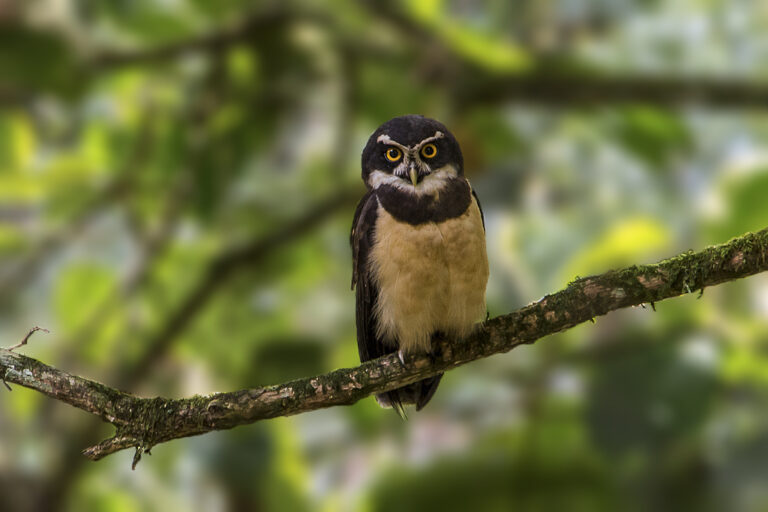Spectacled Owl Pulsatrix perspicillata
Taxonomy
Scientific name:
Pulsatrix perspicillata
Family:
Strigidae
Genus:
Pulsatrix
Species:
Perspicillata
Common names:
Spectacled owl
Biology
Morphology:
The spectacled owl averages 46 cm long and weighs about 850 g, with females being larger than males. They are characterized by white “spectacles” around their bright yellow eyes. They have dark brown plumage on their upper parts and off-white or light yellow plumage on their breast. They have a thin white stripe around the throat with a thick dark brown stripe below.
Reproduction:
Spectacled owls are monogamous. Breeding occurs in the dry season or the beginning of the wet season (April to June or September to October depending on location). They build their nests inside tree cavities. Females lay a maximum of two eggs and often only one chick will survive. Young fledge after 5 to 6 weeks; they are often dependent on their parents for up to a year.
Diet:
They hunt at night and prey on mammals and large insects but will also eat crabs, bats, frogs and smaller birds.
Ecology
Range:
From south of Mexico to northeast of Argentina and southeast Brazil.
Habitat:
Spectacled owls live near water in rainforest and woodlands. They can be found from sea level to elevations of 1,600 m.
Threats
Illegal trade and deforestation for crop and cattle activities. IUCN Red List: Least concern.

